Table of Contents
Brief Information About the Breed
| Height range | 25.5-27.5 inches (male) 23.5-25.5 inches (female) |
| Weight range | 60-85 pounds (male) 55-75 pounds (female) |
| Life span | 12-15 years |
| Origin | Germany |
| Amount of exercise required | More than 2 hours a day |
| Amount of grooming required | Must be brushed weekly, and clipped or stripped regularly to maintain a healthy and attractive coat |
| Ease of training | Easy to train |
| Level of sociability | Amenable |
The Giant Schnauzer – A Loyal, Intelligent, and Active Dog Breed
The Giant Schnauzer is a large, sturdily-built dog breed with a wiry coat. This dog’s origins date back centuries to Germany where it was used as a farm dog and later in military service. The Giant Schnauzer is an active breed that requires regular mental and physical exercise. Though they are not recommended for first-time dog owners, they make an excellent guard dog for experienced pet parents willing to put in the time to train and socialize them properly.
History of the Giant Schnauzer Breed
In Short
The Giant Schnauzer is a relatively new breed that originated in Germany during the 17th century. They were bred as working dogs on farms, where their size and strength came in handy for tasks such as driving livestock and guarding property. Later, Giant Schnauzers were used extensively in military service during World Wars I and II.
History More in Detail
The Giant Schnauzer is the largest of the three Schnauzer breeds. Originally developed in Germany, the Giant Schnauzer was used to drive cattle and later to work in butcher shops and stockyards. Some even served as guard dogs at breweries! The Giant Schnauzer was probably created by crossing the Standard Schnauzer with larger smooth-coated dogs, rough-haired sheepdogs, and the black Great Dane. The Bouvier des Flandres may also have played a role in their development. In the early 1900s, Giant Schnauzers were trained for police work in Berlin and other German cities. The only reason they didn’t become well known as police dogs in the United States is because the German Shepherds beat them to it. The Giant Schnauzer Club of America was founded in 1962. In the United States, the Giant Schnauzer has remained uncommon. Today, the breed ranks fairly low on the list of breeds and varieties registered by the American Kennel Club.
The Giant Schnauzer eventually made its way to America and was recognized by the American Kennel Club in 1930. Today, they are still considered a working breed and participate in various activities such as carting, agility, obedience trials, and coursing ability tests. They have also been known to excel as therapy dogs for autistic children or elderly patients.
Giant Schnauzer Physical Features
Giant Schnauzers are large dogs, with males measuring 26 inches tall at the shoulder and females measuring 23.5 inches tall. They typically weigh between 70-95 pounds when fully grown. The Giant Schnauzer has three coat color variations – salt & pepper, solid black, or pure white. All three variations have a wiry outer coat and a soft undercoat.
This breed is also characterized by their beard and eyebrows, which give them a distinctive look. The mustache area should be trimmed regularly to prevent food from becoming trapped in the hair. The rest of the coat only needs to be brushed about once per week to remove any loose hair.
The Appearance
The Giant Schnauzer is a bearded moustached tough guy with excellent muscular build. Today it is the biggest of all existing schnauzer breeds.
- Head
The Giant Schnauzer has an oblong skull with a flat forehead and without a pronounced occipital tubercle. The muzzle is wedge-shaped, not pointed. The foot is relief.
- Jaw and Teeth
All the representatives of the breed have strong, strong jaws with a full dentition (42 teeth) and a scissor bite.
- Nose
The back of the nose is straight, with no cavities. The lobe is black, large, with large nostrils.
- Eyes
The eyes of the Giant Schnauzer are small, dark, set straight. The eyelids closely adjoin the eyeball.
- Ears
The ears of a Giant Schnauzer are high set and moderately floppy, with a classic triangular shape. The front edge of the ear should touch the dog’s cheekbones, the optimal height of the ear fold is at the level of the skull. Previously, the ears were cropped for aesthetic purposes. Today the procedure is prohibited in most European countries, although most domestic breeders continue to practice it.
- Neck
Giant Schnauzer has slender, graceful, but at the same time very muscular neck without skin folds. In the neck area vertebrae form a slight curve.
- Body
The Giant Schnauzer has a fairly compact body with a short, strong back and a deep, bulging lumbar region. The sides and abdomen are well-padded, giving the silhouette an extra slender appearance. The croup of purebreds should be slightly sloping and the chest not too broad and slightly projecting forward beyond the shoulder joints.
- Limbs
The Giant Schnauzer has straight and moderately broad legs. The shoulder blades are oblique and well muscled, with the elbows close to the body. The hindquarters of thoroughbreds should be drawn back. Thighs shall be of adequate length, normal knees without outward or inward arching and with cat-type feet (arches).
- Tail
The tail is saber-shaped and of normal length.
- Hair
The hair of the Giant Schnauzer is stiff, resembling a wire to the touch. The double coat consists of abundant undercoat and coarse, not very long fleece. The coarsest and longest hair grows on the muzzle of the dog, forming distinctive “whiskers” and “eyebrows.”
Colors of Giant Schnauzer
Officially recognized color types are solid black and so-called “pepper and salt”.
Solid Black
Pepper and Salt
Defects and Disqualifying Marks
Any deviation from the breed standard is already a defect, but if the defect is not very pronounced, the show committee may dismiss it. But owners with twisted elbows, light body type and straightened hips should not count on such allowances.
Disqualifying Defects in Schnauzers:
- Deviations from the scissor bite (overbite, underbite, jaw skew);
- Incomplete/overdeveloped stature (4 cm or more in any direction);
- Congenital deformities and pathologies;
- Inadequate behavior (unreasonable cowardice, aggression, suspiciousness);
- Inconsistency with the breed type;
- defects in body type, color and coat.
Temperament of the Giant Schnauzer
Giant Schnauzers are loyal, intelligent dogs that have strong protective instincts. They require regular physical activity – at least 2 hours per day – as well as mental stimulation through activities such as obedience training or puzzle toys. Without enough exercise, they may become high-strung or anxious.Though they do best with an experienced owner who can provide firm yet kind training, they can make great family dogs if properly socialized at an early age. They typically get along well with other pets and children but may be aggressive towards strangers if not properly trained and socialized.
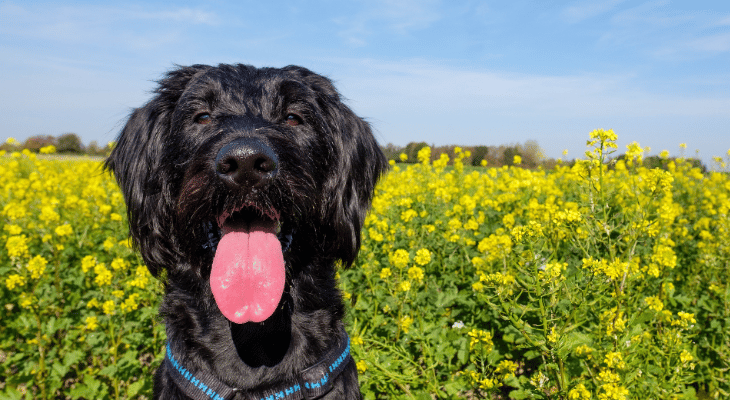
Working Abilities of the Giant Schnauzer
As their name suggests, Giant Schnauzers were originally bred as working dogs on farms. Today, they are still considered a working breed and participate in various activities such as carting (pulling carts), agility (obstacle course racing), obedience trials (similar to Dog shows), herding (driving livestock), and coursing ability tests (chasing game). They have also been known to excel as therapy dogs for autistic children or elderly patients due to their intelligence and loyalty. If you are considering adding a Giant Schnauzer to your family, it is important to remember that they require significant time, effort, and patience. Though they can make great family pets, they are not recommended for first-time dog owners. With proper training, socialization, and exercise, the Giant Schnauzer can be a loyal, intelligent, and active companion for years to come.
The Giant Schnauzer Character
Giant Schnauzers are hard workers. Although, here we must make a remark: a Giant Schnauzer will work only for the benefit of the owner, who was able to prove his own competence to them. In general, leadership in the breed is in the blood, due to which representatives of this canine clan have a reputation of hard-to-master animals. From the early days of life, the Giant Schnauzer respects only themselves and the one who is stronger and smarter, so getting a home “Bavarian” think about whether you can maintain your own authority in the eyes of the pet 24 hours a day during his life. Dogs have quite a warm relationship with children. Most Giant Schnauzers do not mind to run after the restless kids and take part in harmless pranks. There are no exceptions to the common rule, but in general the animals are not inclined to be aggressive to those who are originally considered weaker.
Giant Schnauzer with a Child
One can write about the energy of the breed endlessly. Giant Schnauzer are fast, tireless and able to go from sleep to full alertness at lightning speed. It is not so difficult to make a dog lose its temper if you are a stranger. You just have to raise your voice a little at its owner or to touch him in a not very friendly way. That’s it! Get ready to fight off the attack of an enraged four-legged guard, who saw you as a major criminal element of all time. And yet, the passion for duty does not turn the “Bavarians” into boring, fierce rusks. Quite the contrary, in the home environment Giant Schnauzers are quite nice and good-natured. Moreover, with the right training techniques they easily control their own impulsiveness and excitement.
By nature Giant Schnauzers are very inventive and cunning and gladly use these qualities in everyday life. They will gladly deceive their own owner, if the latter allows, so you’ll need to feel the pulse of the breed at all times. For their normal development the Giants need maximum contact with the owner, learning the science of adequate dialogue. If you get a Giant Schnauzer in the hope that he will just sit in the corner and guard your treasures, – you have chosen the wrong breed.
Upbringing and Training
No matter what activity you bring your Giant Schnauzers to, they will always show great results. They can take the kids for a drive in the sledge, threaten a robber who encroached on the owners’ property or rescue a drowning man – correctly trained Giant Schnauzers can do everything and a little bit more. However, almost all members of this nice family can boast not only a high level of intelligence, but also an outstanding degree of stubbornness, so experts refer to the Giant Schnauzers breed in need of early training. Moreover, according to the experienced trainer and author of the book “The Schnauzer”, Rüdiger Bludau, Giant Schnauzers must be trained during their whole life just because they are thinking and erudite animals, from which you cannot educate blind executors of the owners will.
Never encourage your puppy to bark at strangers
The qualities that every owner must try to develop in his Schnauzer – restraint and obedience. Never encourage your puppy to bark at strangers. The character of the breed is already hot-tempered, so sudden outbursts of aggression are better to extinguish at a young age. They learn easily, but they’ll still try to play the leader, so be serious during the class. Lessons are best done in a playful way with obligatory encouragement at the end. But before that, take your pet for a walk so he can get his energy out and become more focused. Riesenschnauzers don’t like to work on a full stomach, either, so don’t feed your pup before training. If your dog gets crafty during training, don’t scold him, but rather try to stealthily pass the traps he lays. But if your pup persistently ignores commands, it’s time to think. Chances are the schnauzer is testing your authority. Misbehave once or twice and you’ll never want to raise a well-bred dog again.
Owners of show pets need to pay more attention to their socialization. Show pets must calmly tolerate the touch of other people’s hands and not growl at the approaching groomer. You can fight cautiousness of the breed by walking it in crowded places and near busy highways, as well as by taking it on public transportation. Introduce the Riesenschnauzer to a leash in advance. This type of leash is not the most comfortable for dogs, so if you put it on him too late, you can cause him panic and a lifelong aversion to such a thing. You should be careful when walking your Schnauzer on the ring, making sure that it does not tighten the loop on the neck. As for the exhibition stand, the handler cannot do without stimulating treats that will help to keep the dog in the right position.
The Importance of Socialization for the Giant Schnauzer
Giant Schnauzers are loyal and loving dogs that make great companions. However, they can also be willful and stubborn, and they require firm, consistent training to become well-mannered. Giant Schnauzers also need plenty of socialization, both with other dogs and with people. Without it, they can become fearful or aggressive. In addition to training and socialization, Giant Schnauzers need physical and mental stimulation to stay happy and healthy. A daily walk is essential, and interactive toys and games can help to keep their minds sharp. By providing all of these things, Giant Schnauzer owners can set their dog up for success.
Socialization is crucial for this breed. Without it, they can become aggressive toward people, dogs, and other animals. They are naturally suspicious of strangers and need to be slowly introduced to new people and situations. The best way to socialize them is to expose them to as many new people, places, and things as possible. This will help them to become more comfortable with the unfamiliar and less likely to lash out in aggression. It’s important to start socialization at a young age, but it’s never too late to begin. With patience and consistency, even the most wary dog can learn to enjoy the company of others.
Maintenance and Care
Despite the not-so-small size, the Giant doesn’t take up much space in the house and doesn’t turn it upside down. To raise a Giant Schnauzer an apartment dweller is quite realistic, provided that you don’t deny your pet long walks and active outdoor games. And yet, a more acceptable accommodation for dogs of working breeds is the yard of a private house, where the dog can move freely and come into contact with people.
Choose a comfortable bed for your Giant Schnauzer and arrange for him some private space at home. With proper Giant Schnauzer brushes and shampoos you can keep your pup well-groomed and reduce excess hair at home.
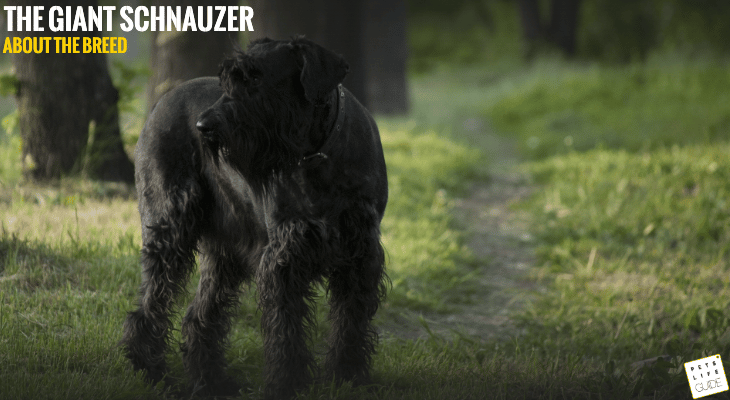
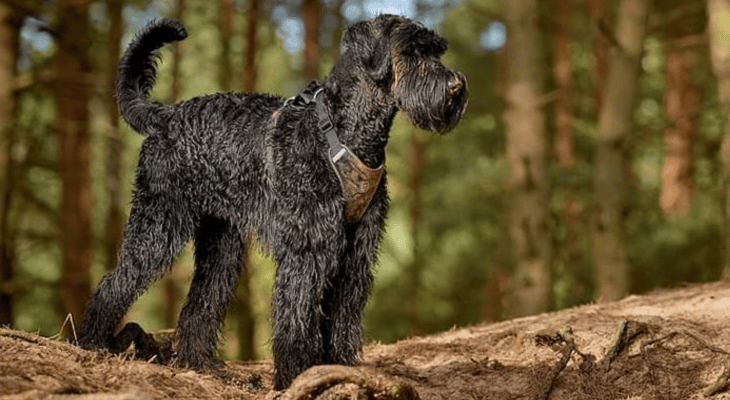
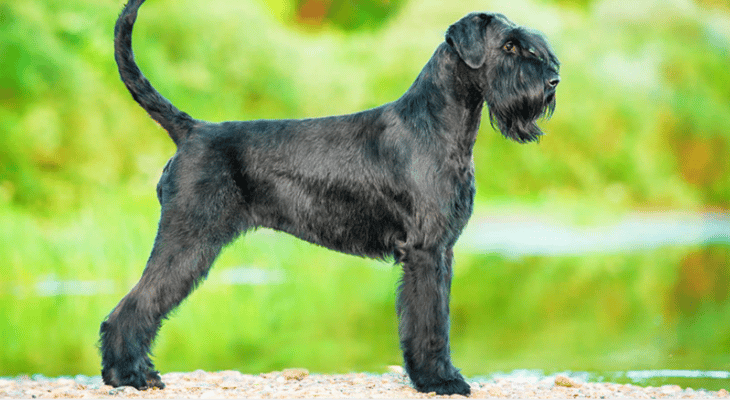
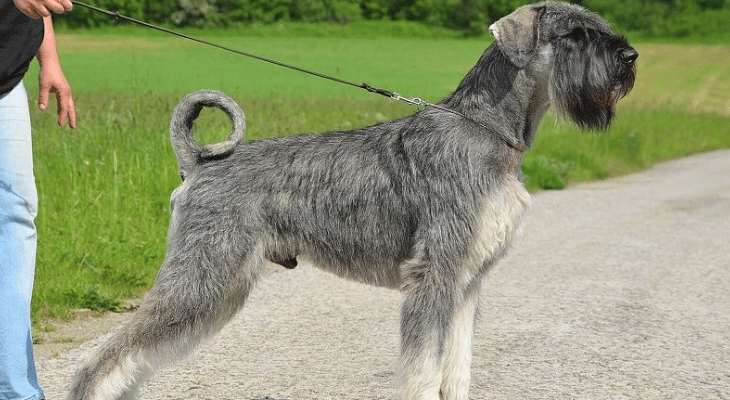
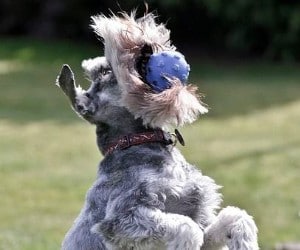
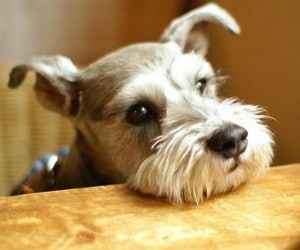


Leave a Reply